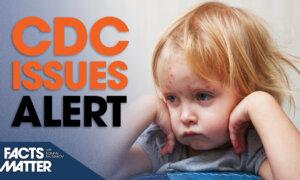Officials in Ohio warned that some travelers who went through the Cincinnati Airport in late January may have been exposed to measles.
In a news release issued Monday, the Ohio Department of Health said that people who were present in Terminal A of the Cincinnati-Northern Kentucky International Airport on Jan. 27 between 5 and 9 p.m. and Jan. 29 between 8:30 and 11:30 p.m. may have been exposed to the virus.
The department said the exposure is connected to a Montgomery County, Ohio, child who was infected with measles. It said that the incident doesn’t involve “an additional case.”
The agency is now working with the U.S. Centers for Disease Control and Prevention as well as other state officials to “identify people who might have been exposed, including contacting potentially exposed passengers on specific flights,” according to the release.
“Measles prevalence has been increasing recently internationally and there have been recent reported cases in the United States, as well,” the Ohio Department of Health said.
Other details about the potential measles exposure were not provided by the health agencies.
In late January, the CDC issued a notice for health care providers to “stay alert for measles cases” following several outbreaks. Between Dec. 1, 2023, and Jan. 23 of this year, it received reports of 23 confirmed measles cases, “including seven direct importations of measles by international travelers and two outbreaks with more than five cases each.”
“Do not allow patients with suspected measles to remain in the waiting room or other common areas of the healthcare facility; isolate patients with suspected measles immediately, ideally in a single-patient airborne infection isolation room,” the agency said, or they are urged to wait in a private room that has a closed door.
Other Cases
In January, health officials in Washington and Virginia issued separate notices about a “case of measles in a person who traveled through” local airports after returning from “international travel.”That person traveled to Dulles International Airport in the international arrivals area of the main terminal between 4 and 8 p.m. local time on Wednesday, Jan. 3, as well as at the Ronald Reagan Washington National Airport’s Terminal A between 2:30 and 6:30 p.m. local time on Thursday, Jan. 4, according to the health agencies.
Symptoms
Authorities have long said measles is a highly transmissible virus that spreads through the air when a person breathes, coughs, talks, or sneezes.The virus typically shows up in two stages. In the first stage, most people develop a fever higher than 101 degrees Fahrenheit, a runny nose, watery red eyes, or cough. These symptoms generally start from seven to 14 days after being exposed.
The second stage of measles starts about two to three days after the initial symptoms. Some people develop what are known as Koplik spots—tiny white spots—inside the mouth, according to the CDC. Three to five days after the first symptoms begin, the telltale measles rash starts to appear on the patient’s face near the hairline area before it spreads to the rest of the body, spreading downward.
“Small raised bumps may also appear on top of the flat red spots,” and the “spots may become joined together as they spread from the head to the rest of the body,” the CDC says. “When the rash appears, a person’s fever may spike to more than 104 degrees Fahrenheit.”







